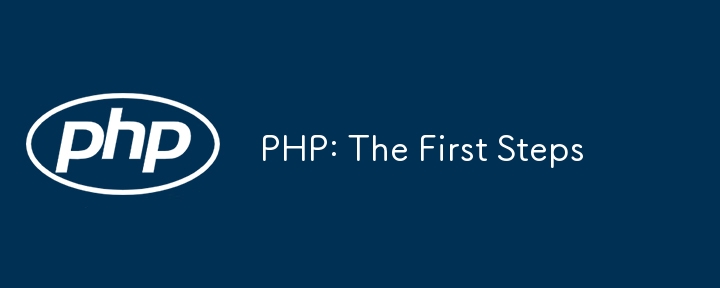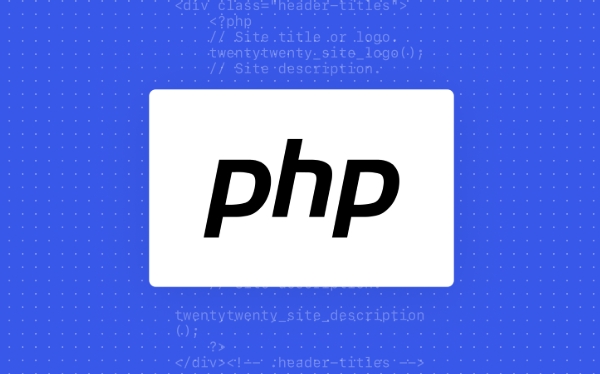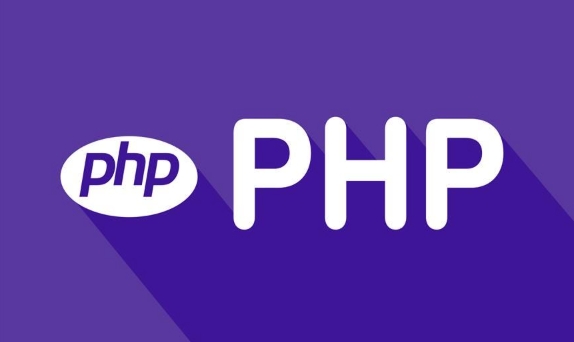The key to the first step in learning PHP is to practice hands-on rather than get stuck in the details. First, you need to install the environment, use XAMPP, Laragon or MAMP to quickly build the server, put index.php into the directory and run it directly; secondly, start with the basic code, master echo output, variables, conditional statements and loops, and avoid mixing HTML and PHP from the beginning; then use MySQLi to familiarize yourself with SQL operations when connecting to the database, and then gradually transition to PDO; finally, when debugging, enable error prompts, troubleshoot problems through logs and var_dump(), and only when writing and searching for information can you truly master PHP.

The first step to learning PHP is actually not that difficult. The key is to find the right direction and don’t get stuck in the grammatical details from the beginning.

Installation environment: Run first
Many people want to understand what each configuration file does as soon as they come up, but they get stuck. In fact, you can first use ready-made toolkits, such as XAMPP or Laragon, and install Apache, MySQL and PHP environments with one click. After installing, put index.php in the specified directory, and you can see the effect as soon as the browser opens. In this way, you can write code immediately, instead of just looking at the document and dazed.
- It is recommended to use Laragon on Windows, which is light and easy to configure
- Mac users can try MAMP, and the operation is also very simple
- If you want to practice the command line, you can also manually install PHP using the built-in server
php -S localhost:8000
After you get familiar with it, it is not too late to learn about php.ini or virtual host configuration.

Write some basic code: start with the output
The easiest output of PHP is echo , such as:
<?php echo "Hello, World!"; ?>
Put it into a .php file and access it in the server directory. If you can see the page output, it means you are already getting started. Next, you can try variables, conditional statements and loops. Don't rush to remember all functions. First master the process control and understand how to "translate" logic into code.

Common misunderstandings:
- Mix HTML and PHP together to write, the structure is messy
- Forgot the end tag
?>or the beginning tag<?php - Output Chinese garbled code, remember to add
header('Content-Type: text/html; charset=utf-8');
Connect to the database: Make the data move
PHP is often used as a backend interface or dynamic web page, so database connection is very important. At the beginning, you can use MySQLi extensions to practice, such as connecting to databases and executing queries:
$conn = mysqli_connect("localhost", "root", "", "test_db");
if (!$conn) {
die("Connection failed:" . mysqli_connect_error());
}Slowly transition to PDO, supporting more databases is also more secure. Don't be scared away by the ORM framework from the beginning. First figure out how SQL runs in PHP, so that you won't be dizzy when you learn the framework later.
Debugging and error handling: Don't be afraid of errors
Newbie people are most afraid of seeing red-word error messages on the screen, but in fact it is a good thing - it tells you what's wrong. It is recommended to enable error display in the development stage:
ini_set('display_errors', 1); error_reporting(E_ALL);
This will help you find problems in a timely manner. Remember to turn off these settings when online to avoid exposing sensitive information.
If you encounter problems, you can:
- See if it is a misspelling or a missing semicolon
- Check log files (usually in php_error.log)
- Use
var_dump()to output variable content debugging
Basically that's all. The key to getting started with PHP is to write by hand, don't just read and not practice. It is normal to not understand many things at the beginning, so I can read them while writing and searching the information.
The above is the detailed content of PHP: The First Steps. For more information, please follow other related articles on the PHP Chinese website!

Hot AI Tools

Undress AI Tool
Undress images for free

Undresser.AI Undress
AI-powered app for creating realistic nude photos

AI Clothes Remover
Online AI tool for removing clothes from photos.

Clothoff.io
AI clothes remover

Video Face Swap
Swap faces in any video effortlessly with our completely free AI face swap tool!

Hot Article

Hot Tools

Notepad++7.3.1
Easy-to-use and free code editor

SublimeText3 Chinese version
Chinese version, very easy to use

Zend Studio 13.0.1
Powerful PHP integrated development environment

Dreamweaver CS6
Visual web development tools

SublimeText3 Mac version
God-level code editing software (SublimeText3)
 VSCode settings.json location
Aug 01, 2025 am 06:12 AM
VSCode settings.json location
Aug 01, 2025 am 06:12 AM
The settings.json file is located in the user-level or workspace-level path and is used to customize VSCode settings. 1. User-level path: Windows is C:\Users\\AppData\Roaming\Code\User\settings.json, macOS is /Users//Library/ApplicationSupport/Code/User/settings.json, Linux is /home//.config/Code/User/settings.json; 2. Workspace-level path: .vscode/settings in the project root directory
 Building Immutable Objects in PHP with Readonly Properties
Jul 30, 2025 am 05:40 AM
Building Immutable Objects in PHP with Readonly Properties
Jul 30, 2025 am 05:40 AM
ReadonlypropertiesinPHP8.2canonlybeassignedonceintheconstructororatdeclarationandcannotbemodifiedafterward,enforcingimmutabilityatthelanguagelevel.2.Toachievedeepimmutability,wrapmutabletypeslikearraysinArrayObjectorusecustomimmutablecollectionssucha
 python parse date string example
Jul 30, 2025 am 03:32 AM
python parse date string example
Jul 30, 2025 am 03:32 AM
Use datetime.strptime() to convert date strings into datetime object. 1. Basic usage: parse "2023-10-05" as datetime object through "%Y-%m-%d"; 2. Supports multiple formats such as "%m/%d/%Y" to parse American dates, "%d/%m/%Y" to parse British dates, "%b%d,%Y%I:%M%p" to parse time with AM/PM; 3. Use dateutil.parser.parse() to automatically infer unknown formats; 4. Use .d
 css dark mode toggle example
Jul 30, 2025 am 05:28 AM
css dark mode toggle example
Jul 30, 2025 am 05:28 AM
First, use JavaScript to obtain the user system preferences and locally stored theme settings, and initialize the page theme; 1. The HTML structure contains a button to trigger topic switching; 2. CSS uses: root to define bright theme variables, .dark-mode class defines dark theme variables, and applies these variables through var(); 3. JavaScript detects prefers-color-scheme and reads localStorage to determine the initial theme; 4. Switch the dark-mode class on the html element when clicking the button, and saves the current state to localStorage; 5. All color changes are accompanied by 0.3 seconds transition animation to enhance the user
 css dropdown menu example
Jul 30, 2025 am 05:36 AM
css dropdown menu example
Jul 30, 2025 am 05:36 AM
Yes, a common CSS drop-down menu can be implemented through pure HTML and CSS without JavaScript. 1. Use nested ul and li to build a menu structure; 2. Use the:hover pseudo-class to control the display and hiding of pull-down content; 3. Set position:relative for parent li, and the submenu is positioned using position:absolute; 4. The submenu defaults to display:none, which becomes display:block when hovered; 5. Multi-level pull-down can be achieved through nesting, combined with transition, and add fade-in animations, and adapted to mobile terminals with media queries. The entire solution is simple and does not require JavaScript support, which is suitable for large
 Java Performance Optimization and Profiling Techniques
Jul 31, 2025 am 03:58 AM
Java Performance Optimization and Profiling Techniques
Jul 31, 2025 am 03:58 AM
Use performance analysis tools to locate bottlenecks, use VisualVM or JProfiler in the development and testing stage, and give priority to Async-Profiler in the production environment; 2. Reduce object creation, reuse objects, use StringBuilder to replace string splicing, and select appropriate GC strategies; 3. Optimize collection usage, select and preset initial capacity according to the scene; 4. Optimize concurrency, use concurrent collections, reduce lock granularity, and set thread pool reasonably; 5. Tune JVM parameters, set reasonable heap size and low-latency garbage collector and enable GC logs; 6. Avoid reflection at the code level, replace wrapper classes with basic types, delay initialization, and use final and static; 7. Continuous performance testing and monitoring, combined with JMH
 python itertools combinations example
Jul 31, 2025 am 09:53 AM
python itertools combinations example
Jul 31, 2025 am 09:53 AM
itertools.combinations is used to generate all non-repetitive combinations (order irrelevant) that selects a specified number of elements from the iterable object. Its usage includes: 1. Select 2 element combinations from the list, such as ('A','B'), ('A','C'), etc., to avoid repeated order; 2. Take 3 character combinations of strings, such as "abc" and "abd", which are suitable for subsequence generation; 3. Find the combinations where the sum of two numbers is equal to the target value, such as 1 5=6, simplify the double loop logic; the difference between combinations and arrangement lies in whether the order is important, combinations regard AB and BA as the same, while permutations are regarded as different;
 Python for Data Engineering ETL
Aug 02, 2025 am 08:48 AM
Python for Data Engineering ETL
Aug 02, 2025 am 08:48 AM
Python is an efficient tool to implement ETL processes. 1. Data extraction: Data can be extracted from databases, APIs, files and other sources through pandas, sqlalchemy, requests and other libraries; 2. Data conversion: Use pandas for cleaning, type conversion, association, aggregation and other operations to ensure data quality and optimize performance; 3. Data loading: Use pandas' to_sql method or cloud platform SDK to write data to the target system, pay attention to writing methods and batch processing; 4. Tool recommendations: Airflow, Dagster, Prefect are used for process scheduling and management, combining log alarms and virtual environments to improve stability and maintainability.






